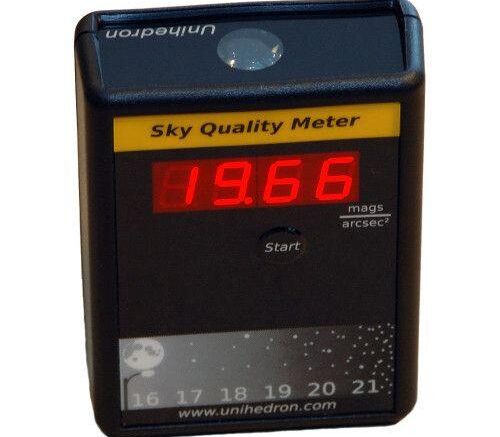A sky quality meter, abbreviated as SQM, is an instrument used to measure the luminance of the night sky. In the case of astronomy, the It is used, typically by amateur astronomers, to quantify the skyglow aspect of light pollution, by measuring skyglow in units of “magnitudes per square arcsecond.”
After obtaining results, the SQM measurements can be submitted to a database on the manufacturer’s website. For those interested in using their SQM for a citizen science project, there is the GLOBE at Night.
There are several models of SQM made, offering different fields of view, and various automatic measurement and data logging or data communication capabilities. This is helpful for measuring different angular areas on the sky for cities and potential dark sky sites. There are also several different vendors of which to purchase an SQM, some of which have varying degrees of technical features.
As compared to sites such as lightpollutionmap.info, which do not collect data on blue light emissions for a site, a sky quality meter will be able to collect all of the light in an area. To do the imaging, there are a set of 2 satellites that collect dat in the green and red wavelengths. This is important because it allows organizations tracking light pollution to track light pollution over time. This means changes to light pollution can be correlated to changes in regulations, time, and building in the area.
There is an SQM is produced by the Canadian company Unihedron, which is located in Grimsby, Ontario. They provide an amazing range of models that are used by astronomers, including the IDA chapter in Oregon. These models are utilized by the IDA chapter in Oregon to measure skyglow, which have to have the measured data collected by downloading the data by a volunteer in person.
There is a European model that connects to WiFi, which will help collect data in an easier way, but this does require wifi access. This can pose problems, as the wifi collection device will ned to be close enough to capture data, but not close enough to hamper the light pollution.

Be the first to comment on "Sky Quality Meter"